Goat Breeds List
When you first decide to dive into the wonderful world of goats, deciding what to raise can be overwhelming. Do you want a small breed of goat, a big breed of goat, one for milking, or just a pet? This goat breeds list will help you to narrow things down so you can make the best decision.
Raising goats successfully all starts by choosing the best goat breeds that fit you and your family.
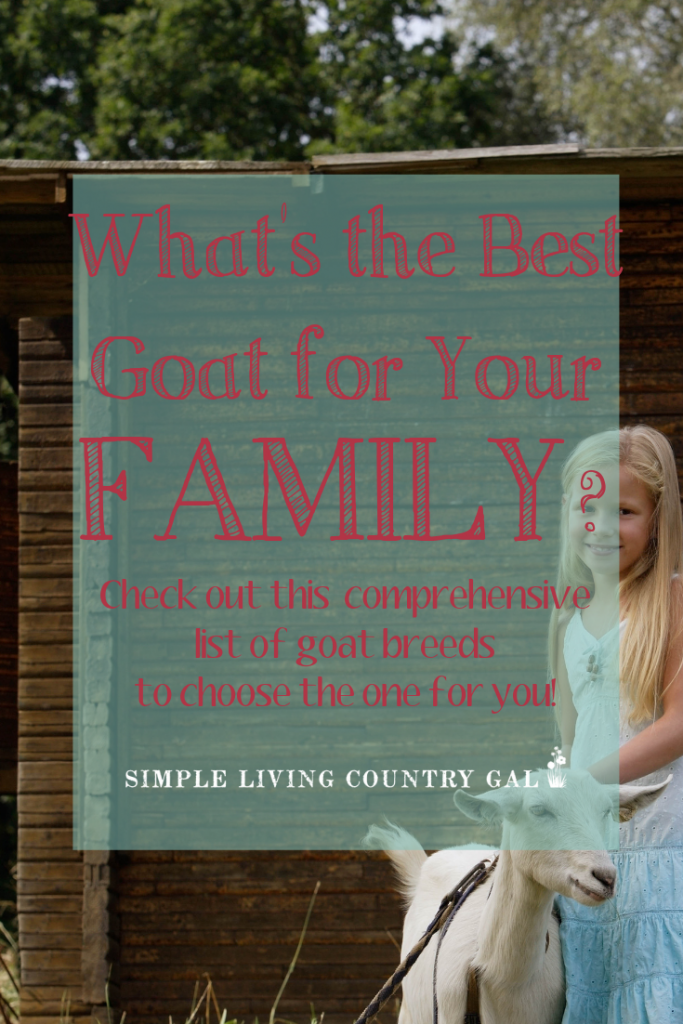
Not all goats are created equal, and understanding their different qualities can help you narrow down your choices. Know the pros, cons, and characteristics of each, and keep this guide as a resource to refer to any time you want to grow your herd.
Key Points to Know About Goat Breeds
Goat breeds can be sorted into 4 categories: dairy, meat, fiber, and dual-purpose.
- Dairy goats are bred for milk production and are known for their high milk yield.
- Meat goats are specifically raised for meat production, with some breeds known for their fast growth rates and lean meat.
- Fiber goats produce mohair or cashmere and can be shorn twice a year.
- Dual-purpose goats are raised for both milk and meat production, and can be a good option if you want to diversify your farm’s products.
Dairy Goat Supplies for Milking:
Estink Manual Goat Milking Kit, 3L Plastic Portable Household Goat Milking Machine Manual Operation Sheep Cow Milker Kit Hand Pump Milker Machine for Farm Household Cow Goat Milking (for Sheep)




![WIDE Mouth Mason Jar Lids [16 Pack] for Ball, Kerr and More - White Plastic Storage Caps for Mason/Canning Jars - Leak-Proof](https://easyproductdisplays.com/wp-content/uploads/2017/07/buy6.gif)
Benefits and Characteristics of Goats
Goats are a popular choice on homesteads today because they are smaller and easier to handle compared to cows. They are also efficient milk producers, with some breeds producing up to a gallon of milk per day.
Benefits and characteristics can be quite different and knowing what you are getting before you choose a breed will help you to feel more confident with your investment.
Goat Breeds List
Let’s go over the basic characteristics of each of the most popular breeds of goats to help you narrow down the best fit for you, your lifestyle, and your family.
Goat Breed #1 – Alpine
Alpines are a medium to a large-sized goat best known for their milk production. If you are looking for volume, then this is your goat!
- They have long, straight noses with tall ears and a low, raspy call.
- Fully grown, they weigh about 135 pounds and stand about 30 inches tall.
- They have nice, large teets, which make them easier to milk especially if you have hand issues, such as arthritis or carpal tunnel.
- Alpines are friendly goats that tend to be strong-willed at times. They can be a bit tricky to train, but with a strong routine and a lot of consistency, it can be done.
- Alpines have a smaller butterfat content at 3.4%, but are heavy producers.
- Alpines can produce over a gallon a day. Keep this in mind if you have a small family and don’t want more milk than you can handle.
Final Word: Alpines are a good choice for milk goats. They are heavy producers allowing you plenty of milk for a large family with a surplus to sell if this is something you want to do.
Alpine Characteristics:
- Size – Medium to large breed
- Physical – Tall ears with a long straight nose and may have a beard.
- Height – 30 inches tall
- Weight – 135 lbs
- Hair – Short
- Breeding Season – August through December
- Average Kid Size – 6-8 lbs
- Butter Fat – 3-4%
- Milk production – A gallon or more a day
- Manner – Friendly and docile. Can be a bit stubborn.
Goat Breed #2 – Boer
Boer goats are a short stalky breed that is mainly for meat production. They have a fun and silly mannerism that makes this a favorite breed for our family. Boer goats are hardy, meaning they are resistant to disease and tend to do well in hot dry climates.
- Boer goats are mainly white with brown heads. They have long, pendulous ears with short faces.
- They tend to gain weight faster than other breeds, with the average full weight being 120-200 lbs for does and 200-350 lbs for bucks.
- Does are known to be wonderful mothers, even superior to other breeds.
- They are very docile, even the bucks, and are eager to learn. Because of that, they can be easily trained as long as you work with them early.
- A skittish Boer goat will take a while to turn around, but it can be done if you are patient.
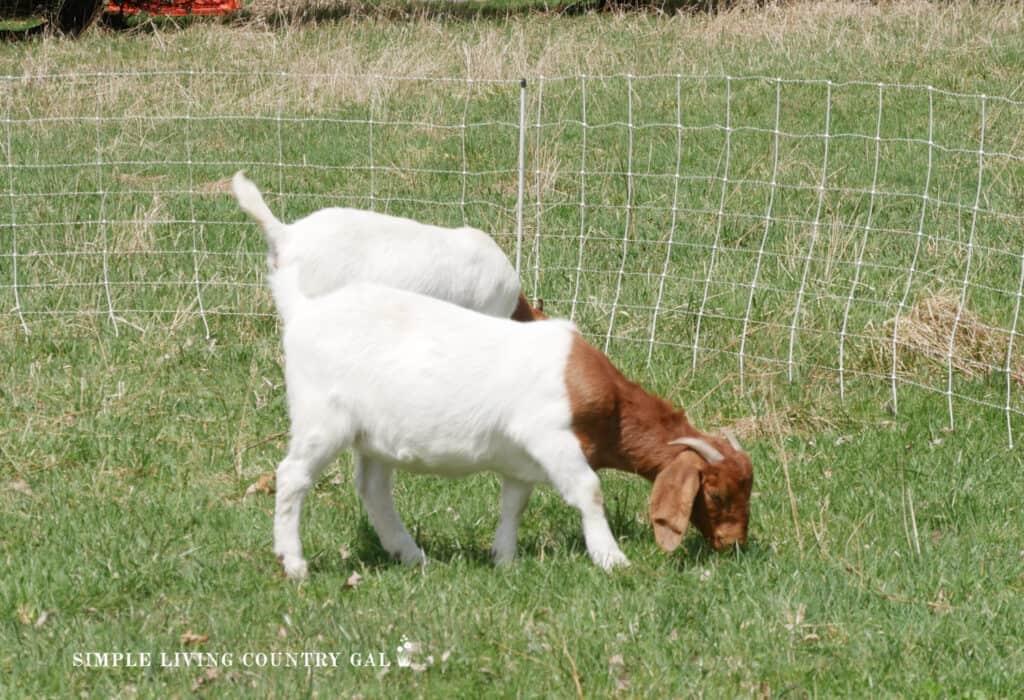
Since Boer goats are bred for meat the does tend to make just enough milk for the kids and are not in milk very long. You can milk them, but the production will be much lower than a dairy breed.
Final Word: Boer goats are a good addition if your main goal is to raise meat goats on your homestead. They are friendly and hardy and tend to be self-sufficient in a herd.
Boer Characteristics:
- Size – Average height with a larger weight.
- Physical – Short stalky goat with thick legs and a broad chest.
- Height – 17 – 25 inches tall
- Weight – 200 lbs
- Hair – Medium length
- Breeding Season – Year-round with August-January the most common time.
- Average Kid Size – 6-12 lbs
- Butter Fat – 5% or a bit higher
- Milk production – Up to 1/2 gallon a day if they have a good udder.
- Manner – A docile goat but can be timid if not worked with early on.
Goat Breed #3 – Kiko
Kiko goats are another breed of meat goat that is a lot like the Boer goats mentioned above. Kiko goats are a hardy breed that can withstand cold and inclement weather. They can thrive in tough climates, making them an ideal choice for those living in harsh conditions.
- They are durable goats that tend to kid very well with little or no assistance.
- They have straight noses with medium-length ears.
- Most are white but can have a variety of colors as well.
- Labeled as independent goats, they will live just fine with little human interaction. For this reason, you will have to work to train them if needed.
- They can be milked, but like the Boar goat, they will produce for a much shorter time than the dairy breeds.
- Kiko’s are known to be worm-resistant, hardy, and great mothers might explain why they seem to be growing in popularity. A heavier goat does average 100-150 lbs, with the bucks more at 150-200 lbs.
Final Word: Overall, Kikos are a great meat goat addition to any farm. However, if you are considering getting into the show goat business, this is not the breed for you. Kiko’s are low maintenance and left to their own devices, will thrive in outdoor living conditions.
Kiko Characteristics:
- Size – Average height with a larger weight.
- Physical -Short stalky goat with thick legs and a broad chest.
- Height – 17 – 25 inches tall
- Weight – 200 lbs
- Hair – Medium to long in length
- Breeding Season – Year-round with August-January the most common time.
- Average Kid Size – 6-12 lbs
- Butter Fat – 4%
- Milk production – Up to 1/2 gallon a day if they have a good udder.
- Manner – An independent goat that will do well on their own.
Goat Breed #4 – Lamancha
These goats are best known for their tiny ears (gopher ears) that may look as if they have none at all. They are a smaller breed of goat with a similar build to the Nubian.
- Lamancha goats are very calm and docile.
- They are known for producing lots of butterfat-rich milk.
- Milk production time can last up to two years without rebreeding, so if you are looking specifically for a good milker, this is your goat.
- Lamanchas do well in various climates, and their calm nature makes them wonderful family goats. They love human interaction and make great pets.
- Does tend to weigh 130 lbs, whereas the bucks are closer to 165, and both stand about 30″ tall, so their size is not too intimidating.
Final Word: Lamancha goats are wonderful additions to any milk-producing farm. Their docile nature makes them great for families and their high butterfat content is perfect for making delicious dairy products.
Lamancha Characteristics:
- Size – Smaller build.
- Physical – Gopher ears with a long straight face.
- Height – 25-30″ tall
- Weight – 130 lbs
- Hair – Medium to long
- Breeding Season – Fall/winter
- Average Kid Size – 6-8 lbs
- Butter Fat – 3.9%
- Milk production – Close to a gallon a day for up to two years of production
- Manner – Very docile
Goat Breed #5 – Nigerian Dwarf
These are a cute miniature goat that is gaining popularity with more of the smaller homesteads. Because of their smaller size, they are a great fit for young families and do well around children.
- They have a friendly nature, even the bucks, so they are a great option for a family goat.
- Since they are on the smaller side, they require less room than the larger breeds are a great way to get your feet wet with dairy animals.
- They have small, sometimes tiny teets, and milking usually requires just using your fingers rather than your entire hand. If you have issues such as arthritis or carpal tunnel, you will want to keep this in mind.
- Nigerian Dwarf goats have upright years and short straight noses. Their fur is short to medium and they stand about 19 inches tall for the does and up to 23 inches for the bucks. A good healthy weight for Nigerians is about 75lbs.
Final Word: Nigerian Dwarf goats are a great breed to have on a family farm. They are cute, friendly, and easy to manage. Their milk production is around a ½ gallon per day and has a butterfat content of 6-10%. They do require some extra care in the winter months as they are not as cold hardy as other breeds. However, with proper shelter and care, they make a great addition to any homestead.
Nigerian Dwarf Goat Characteristics:
- Size – a Small breed of goat.
- Physical – Straight noses and upright ears. They can be any color or pattern.
- Height – 19-23 inches
- Weight – 75 lbs
- Hair – Short to medium
- Breeding Season – Can be bred year-round
- Average kid size – 2-3 lbs
- Butter Fat – 6.5%
- Milk production – 1-4 quarts a day
- Manner – Docile, gentle and friendly. Great for young families or companion animals.
Goat Breed #6 – Nubian
The Nubian goat is considered a dual-purpose breed of goat. This large breed goat is really known for their long pendulous ears and a Roman nose. These goats tend to do well in the hot weather and have a longer breeding season than other goats.
Since they are larger they require more space than the smaller breeds. Overcrowding is never good with any animals especially goats, so be sure you have space before you buy – both inside and out.
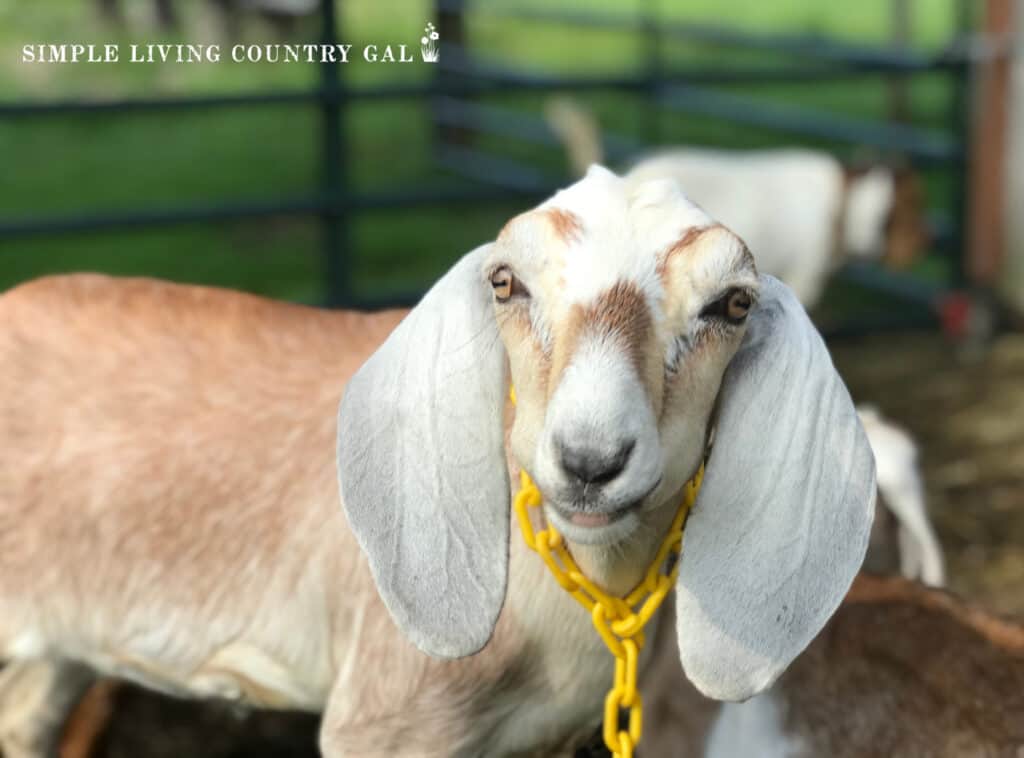
Nubians have a higher butterfat content of about 5% or more which gives their milk a lovely flavor. They are not a top producing goat as some of the others so keep that in mind if the quantity is more important than the specific taste.
- They can produce up to a gallon a day.
- A larger goat, a full-grown Nubian doe, can be around 30 inches tall, with the bucks hovering at about 35 inches. The average weight is 135-175 pounds, with the bucks well over 200.
- Nubians are very friendly, making them pleasant to work with. They are also very easy to train since they love human interaction.
- Because of their large size, they might not be a good fit for families with very young children.
- They have longer teets that make it a good choice for milking especially for an older owner such as myself. Having a large teet to grip makes hand milking much easier.
- Nubians are loud and can (but not always) yell if they are hungry, bored, in heat, or just plain happy. They are the loudest when in heat, so if you do have neighbors, just a bit of warning beforehand will usually be enough to keep any complaints away.
- They have medium hair with the American breeds a bit longer and something to keep in mind if you live in a very hot climate. We find that clipping them at the beginning of each summer really helps to keep them cool.
Final Word: Nubian goats are a wonderful fund breed to have, especially if your children are a bit older. They are friendly and easy to work with, making them a great addition to any homestead or backyard farm. Just be aware of their loud personalities and large size when considering if they are the right fit for your family. Ultimately, the flavor of their milk is well worth it.
Nubian Characteristics:
- Size – Large Breed
- Physical – Long pendulous ears with a Roman nose
- Height – 30-35 inches tall
- Weight – 135-175 pounds
- Hair – Short to Medium
- Breeding Season – August through December
- Average Kid Size – 6-9 lbs
- Butter Fat – 5%
- Milk production – Up to a gallon (or more) a day
- Manner – Very friendly and loving goat
Goat Breed #7 – Oberhasli
Known for their beautiful coats and striking colors, Oberhasli is a great family milk goat. They are a very friendly goat and do not frighten easily like the other breeds tend to do.
- These goats are used as pack animals since they love to work and do well in a group.
- They are quite docile goat making it a good fit for backyard homesteaders.
- Oberhasli breeds are great milkers producing up to 1 1/2 gallons a day.
- Does are around 28″ tall and weigh around 120 lbs with the bucks averaging 34″ and weighing 150 lbs.
- Some breeds may not do well in wet climates so you will want to ask plenty of questions when purchasing to ensure they can tolerate your climate well.
Overall a great working dairy goat that has a smaller size making it a good fit for a young family that lives in a dryer climate. They also have a higher butter fat content in their milk, making it great for cheese and other dairy products.
Oberhasli Characteristics:
- Size – Medium
- Physical – A variety of colors with the telltale black dorsal fin. They have straight ears and a short face.
- Height – 28-35″
- Weight – 130 lbs
- Hair – Medium
- Breeding Season – August through December
- Average Kid Size – 4-8 lbs
- Butter Fat – 3.5% – 4%
- Milk production – up to 1 1/2 gallons a day
- Manner – Quiet and docile.
Goat Breed #8 – Saanen
Best known for its all-white color, Saanens have short straight ears and faces making them easy to spot in a herd. \
- A larger dairy goat, they are high quality and high volume milker.
- A very friendly goat, it is a favorite among dairy owners and because of their gentle nature they are a great fit for families with young children. Because of their larger size, they are known as the gentle giants of the goat world.
- Does average 145 lbs and 31″ tall with the bucks closer to 200 lbs and 35″.
- They have a lower butterfat content and are large producers tending to do well in just about any climate. Their resistance to disease is just another plus for this breed.
Overall and wonderful dairy goat for young families or a new goat owner. They are gentle, easy to handle, and produce a large amount of milk.
Saanen Characteristics:
- Size – Medium to large
- Physical – White with straight ears and beard.
- Height – 33″
- Weight – 150 lbs
- Hair – Short
- Breeding Season – August through December
- Average Kid Size – 6-8 lbs
- Butter Fat – 3.5%
- Milk production – Up to 1 1/2 gallons a day
- Manner – Very docile friendly animals
Goat Breed #9 – Toggenburg
A Toggenburg goat is probably the oldest known dairy goat that is a great milk producer with lower butterfat. Most Toggs tend to have wattles (appendages on the throat) which is just another wonderful trait of this dairy animal.
- They are medium in size and can vary in colors from tan to gray. They look similar to the Alpine sporting beards in both does and bucks.
- They are very alert goats that are calm and affectionate.
- Toggenburg does height around 30″ and the bucks at 36″. Weight for a doe is usually around 125 lbs with most bucks closer to 200 lbs.
- They do best in colder climates and are great mothers.
Final word: Toggenburgs are a great heavy-producing goat that will fit with any family that loves milk. Be sure to clip their hooves often as they tend to grow fast and can cause health issues if not kept trimmed.
Toggenburg Characteristics:
- Size – Medium
- Physical – Resembles the Alpine goat with straight ears and face.
- Height – 33″
- Weight – 130 lbs
- Hair – Short to medium.
- Breeding Season – August through December
- Average Kid Size – 6-8 lbs
- Butter Fat – 3.2%
- Milk production – Up to 1 1/2 gallons a day
- Manner – Friendly and alert goats.
Even though this list does not cover them all, it is the most common type of family goats found in the US today.
Finding the best fit for your family’s age, size, and location are all things you really do need to consider before investing in a goat. Be sure to do your homework before bringing them home to ensure you have the best breed for your environment. A healthy goat is a happy goat, so adequate housing, freshwater, forage, and feed are all factors you need to consider BEFORE bringing them home.
Having a fridge full of fresh milk, delicious cheese, and butter are just some of the perks you get if you raise any animals from this goat breeds list. Add that to their loving and quirky personalities, and you might just find goats the best way to add a bit of fun to your homestead.
More Goat Care Resources:
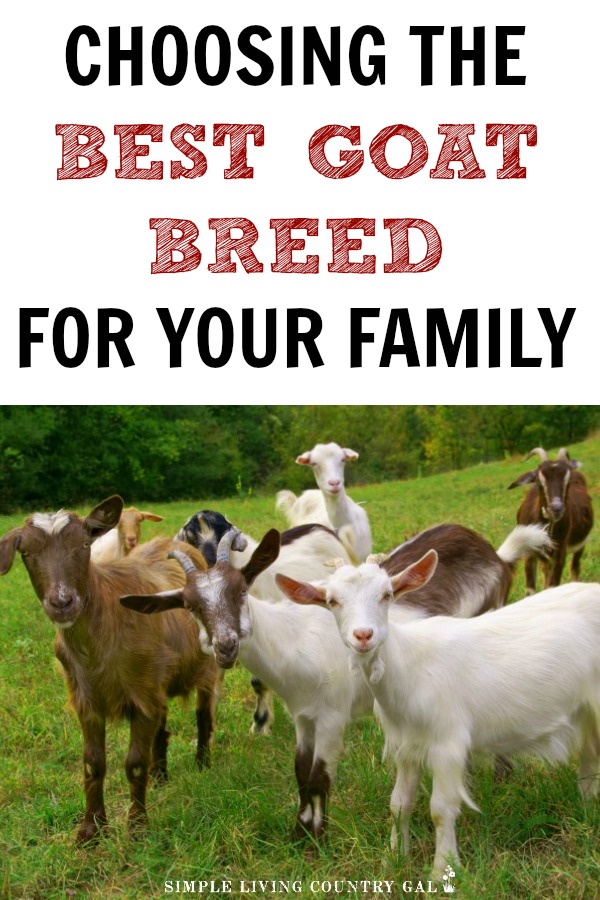






![WIDE Mouth Mason Jar Lids [16 Pack] for Ball, Kerr and More - White Plastic Storage Caps for Mason/Canning Jars - Leak-Proof](https://m.media-amazon.com/images/I/315hC2lw8+L._SL500_.jpg)

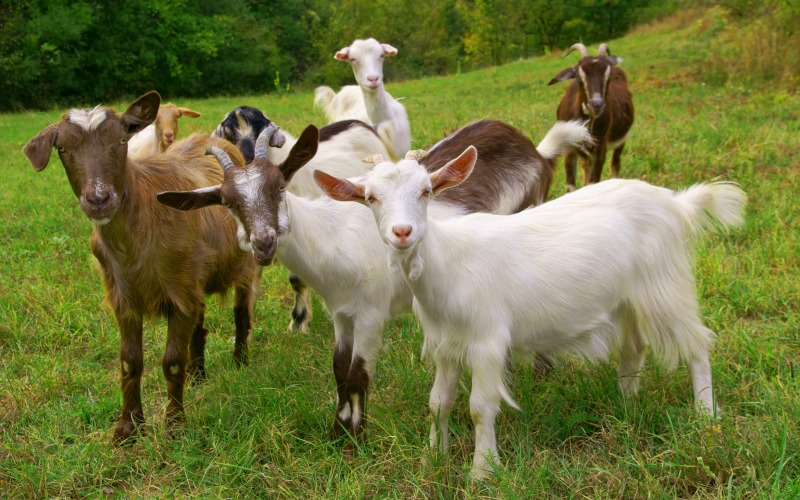
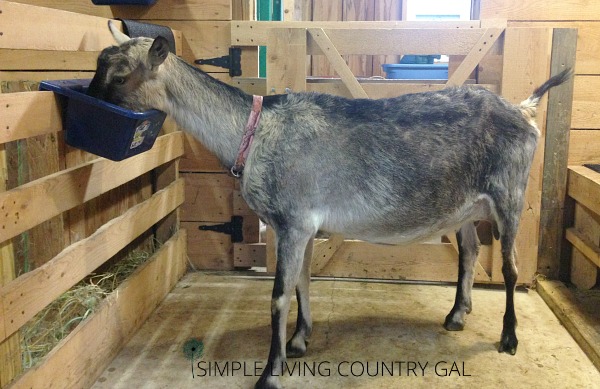
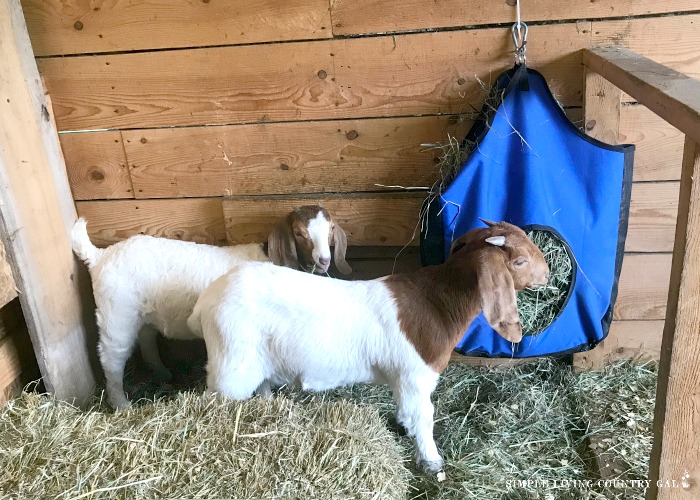
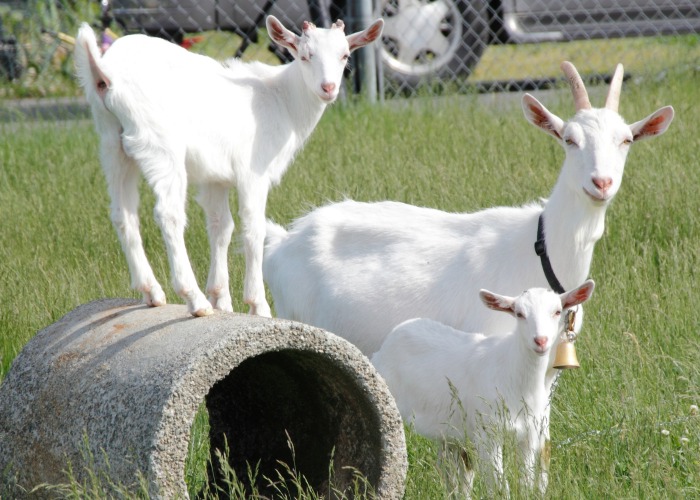
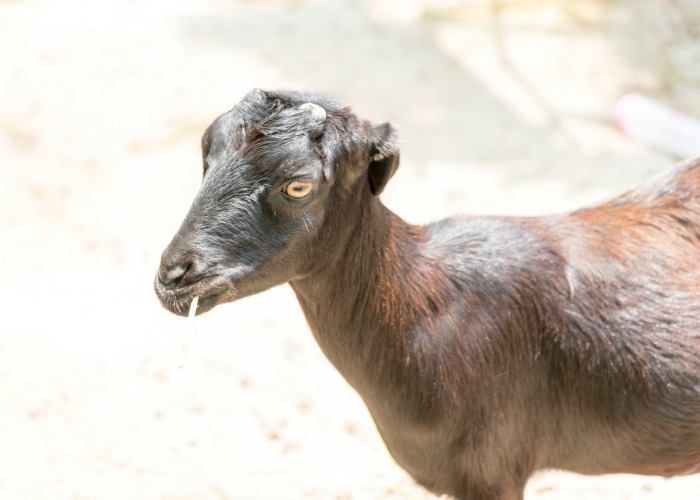
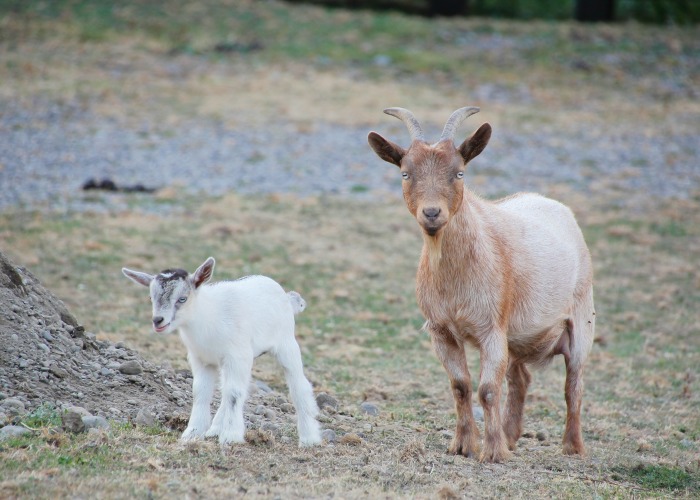
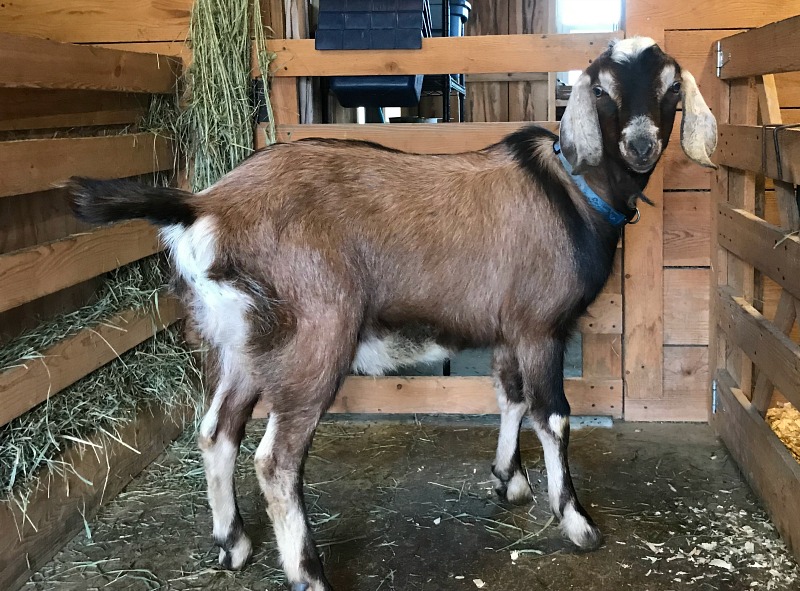
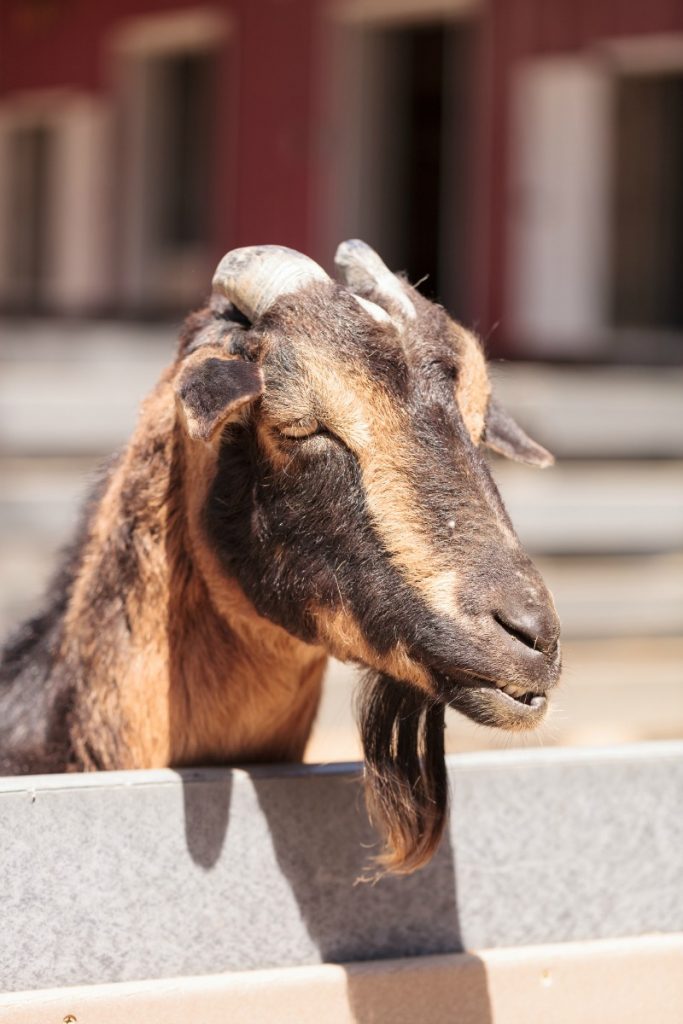
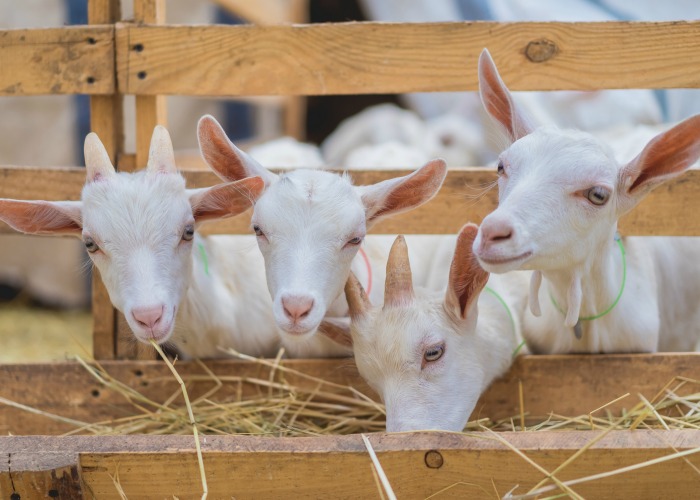
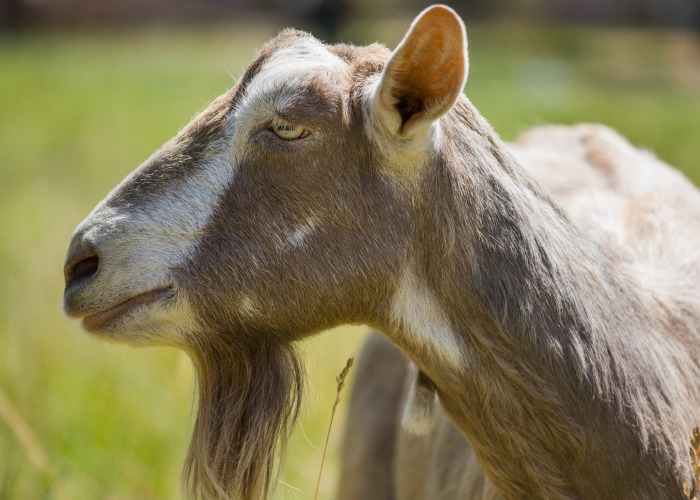
Can you breed a Nubian buck to alpines and dwarf Nigerians or should I have two bucks with size difference.
Hi, Marie!
You can technically breed a Nubian to a Nigerian dwarf, but it is not a good idea if you have a full grown buck. When breeding you need to be sure of a few things first.
1. That your doe can handle the weight of a bigger buck. If not you can severely hurt your does.
2. That your does are old enough to be bred. It is recommended that does be at least 10 months old, but we wait for at least 1 year here before we beginning breeding.
3. If the buck is a large breed Nubian then he may throw large breed kids that can be a danger to your doe. If she is a first freshener then the chances of a single kid are higher which is not a good scenario. Single kids tend to be larger than multiples and can be difficult to deliver if a dwarf doe.
If it was me, I would not do it. To get a Mini Nubian it is better to use a Dwarf buck with a Nubian doe.
Hope this helps!
Tracy Lynn
What a great rundown of the different breeds! I want to add goats to our farmstead this summer, and I will definitely be saving this post to read again as we finalize our plans. Thank you so much for sharing on the Homestead Blog Hop!
I am so glad you found it helpful, Lacey!
What about Pygmy goats ? I heard about them and I was curious.
I too am curious about Pygmy goats. Thank you!
Pigmy goats have little teats and little milk like the boar goats and are meant for meat or just family fun they are also usally
around the same size as nigerians or smaller so if you want a meat or famliy goat pigmys are a good choice
Great to know, Cate!
Thank you for sharing!
Tracy Lynn
I’ve been thinking about getting a goat (or pair if they’re “social” animals), and don’t know where to start. I have two dogs. Shadow is a Mastiff/Catahoula Cur, seven years, pretty laid back, accepting of most any animal I give her (loves when her long legged “doggy” friends come by – they’re horses and the riders will stop along the fence and talk to her). Joker, who is just that, nearly 18 months and still very foolish, but also pretty accepting, is Rottweiler/Black Lab. He’s much more active, runs the two acres more. Anyway, what breed would be good with them? They’re large, but not giant, dogs. I’ve also apparently got a little Ma and Pa Kettle in me – serious question, what goat would be the best with my dogs and a good house goat? I live in northern Arizona at about 4,500 feet. It gets hot in the summer, some days just over 100; lower humidity for the most part. Winters can be wet when it rains or snows, but once that stops a couple days of good sunshine and it’s dry again. I’m sure I’d have to supplement their food, this is the high desert still and pretty sparse right here, but I’m not that far yet. I’d love to read and see what you come up with. Are their foster moms for goat babies?
If you are looking for a house pet then the mini goats are more of what you may want. As far as your dogs, it’s not the breed so much as how you introduce them to each other. Keep them close but not together. Allow your dogs to learn their smell and the importance they have with you. Do things slow and gradual and allow your dogs and goats learn to live with each other. Never allow them together unsupervised until they have accepted each other completely.
We have some pretty hot summers here as well. To help I shave my goats each June. I just use regular clippers without any attachment. Up on the milk stand they go and I give them grain to much on while I work. It takes a bit, but they really do much better when I am done.
I hope this helps!
Tracy Lynn
I read through quickly, but was there any goats that do well in wet conditions?
Thanks!
Goats as a whole do not do well in wet conditions. We have a very wet pasture and that means parasites are a problem for us. To combat this I only let my goats out after the sun has had time to dry up the pasture. This will help the slugs and snails to work their way back down to the cool wet ground. This is important since they can carry parasites that the goats can ingest when eating grass they are on.
I also use an herbal wormer to insure I am building up a natural resistance to any worms or parasites. All goats have worms, our job is to make sure that they do not get an overload of them.
With that being said it’s the hardiness of the goat itself more than the breed that will determine how well they can keep parasites from getting out of control.
I hope that helps!
Tracy Lynn
We have 1.1. Acres, and want to get a few goats for grazing and maybe milk… I’ve a toddler, were semi-country, so preferably not a singing all day long goat. Lol. What would you reccomend? Also, should they be all the same breed? The grass isnt too high, less than 3 ft. Just field grasses… and also. Should it be a mix of males to females. Or does this even matter? Not intended for breeding. Thanks for the help.
Hello, Liz!
If you want to milk your goats you will need to breed them and that requires a male goat (buck). You do not have to have a goat on the property, there is a lot that goes into keeping male goats, but you will need to breed once a year to keep the milk flowing.
You can absolutely mix breeds with no problem and the Nubians are really the only goats that like to make noise. Any other goat breed should work just fine.
I hope this helps!
Tracy Lynn
I have plenty of room (5 acres) to use for goats. Can you recommend any friendly large goats for us? We live in Michigan so the climate is hot in summer and cold in winter.
Hello, Madison!
I love LOVE Nibian gaots, they are by far my most favorite goats. So loving and those ears!! I just love those long ears. You can also do good with Alpines as well.
Good luck!
Tracy Lynn
Hi!
My husband and I have just bought a house on .5 acres. We have wanted a pet goat for a while, but not sure which one to get… we have 2 daughters (3 year old & 2 year old). We aren’t looking for either a meat or dairy breed necessarily, but I’d prefer a dairy breed as we would keep the goat as a pet. Which breed would you recommend? And how much space should we have available for a goat? Do they do okay when you only have one? Sorry for all the questions, and thank you in advance!!
Hello, Shauna!
With younger children the smaller goat breeds are probably a better way to go. A mini Nubian or a Nigerian Dwarf goat is a great dairy goat breed that you might love. Goats are herd animals and need to be with another animal to be happy. This does not need to be a goat, however. As long as they are with another animal full time (24/7) they will do just fine.
As far as room, you will need a shelter to keep them out of the rain and wind and snow. If you have enough room, a grazing area of about 10-15 square feet per adult goat.
I hope this helps!
Good Luck,
Tracy Lynn
I have only just discovered your brilliant website. What a pleasure to access to so much truly helpful information! I have been ‘mulling’ having goats. I love the idea and while I want a hardy, least inclined to disease or birthing difficulties I also want to explore having a mix of meat and milk goats. For now my question is if I were to get milk goats I would be especially interested in cheese making. Do different dairy goats offer different qualities for that purpose?
Yes, the goat really does matter when it comes to making cheese. You can find out all the butterfat content and other tips in my post, How to pick the best Dairy goat.
I hope this helps!
Tracy Lynn
What are the best goats for brush control? I’ve been trying to get a goat but recently found out we can’t have them in city limits, after a bit of research I’ve found out you can get them if you’re using them to maintain your lawn, which would be helpful. They also need to be friendly family ( 6 – 13 ), I was looking at pygmy goats but are there any breeds you would suggest? we are using them for companionship and brush control only.
I think for brush control Boer goats are a good option. Remember not to get goats that are too small as the brush may be hard for them to reach up high. Large weeds for example. Boer goats are also easy to sell since meat goats are more popular than dairy goats. Finally, people-friendly goats are that way because of how they are raised. So before you buy, talk to the owners, ask if the goats were bottle raised (much more people-friendly) and finally be sure to get goats without horns so you do not have to worry about accidental injury to your kids.
I hope this helps!
Tracy Lynn
I was wondering what you thought about Tennessee fainting goats and the difference between polled and not polled?
Hi, Theresa!
I do not have any experience with fainting goats. I have seen them but as far as temperament and care I am not to up on that information. As far as polled goats, I also do not have much to help in that area either. We do our own dehorning with the help of our vet and have not looked into goats that are specifically bred to not have horns.
Sorry, I cannot be of more help
Tracy Lynn
I’m purchasing a 15 acre farm that has pasture land. I’m not familiar with horses but would like to have animals to keep the fields low and keep the weeds down. I have about 6-8 acres, 6 indoor stalls, shelter for animals.
I’m going to start with chickens but should I get some goats to keep the pasture trimmed? Hot humid summer and freezing temperin the winter.
What kind of goats and how many?
Hello, Anna!
Goats love to graze and can absolutely help keep your pasture under control, but raising goats is a huge time and cost investment. Care, feed, housing, upkeep, are super important. Before investing in goats I want to encourage you to do research on if this is an avenue you want to go down. If so, great! I think goats would be a great addition. Start out with 3, as goats are herd animals and see how they do. Any goats will do great in pastures but Boer goats do well in hot dry weather. Again, research and decide.
All the best,
Tracy Lynn